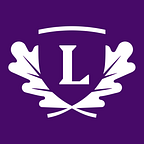Introducing Linfield University
— by Miles K. Davis, president, Linfield University
The semester we just concluded is not one anybody could have foreseen. Worldwide pandemic turned the lives of students, faculty and staff upside down, and forced Linfield to adapt quickly to a fast-changing environment.
I’m proud to be part of a community that embraced the change, cared deeply for one another and worked hard to keep the learning experience a positive one. You can read more about the changes in recent months, and their impact on Linfield, throughout Linfield Magazine’s online edition.
As archivist Rich Schmidt points out in this story about Linfield’s past, Linfield has been tested many times before. No matter the challenge, we’ve always stayed the course and emerged intact.
Even before anyone had heard of COVID-19, this was going to be a significant moment in our community. As of July 2020, Linfield College passed into history and Linfield University was born.
With this new name, we are not just staying the course, nor simply changing the sign that greets you on Founders Way. We are taking an even bolder step — transforming into an institution that will serve students in the coming decades with a new structure that includes a College of Arts and Science, a School of Nursing and a School of Business. Our first new graduate program, in health care leadership, has already been developed by the School of Nursing.
As exciting as the name change and new structure are, I also want to make sure you are aware of what will not change at Linfield. We will continue to be a mission-driven institution that connects learning, life and community. We will continue our focus on the student experience and maintain our emphasis on a high-quality interdisciplinary education provided by faculty who include multiple perspectives in the classroom.
None of the above, nor our warm, welcoming environment, will change. We will continue to operate as one team, even as we have different schools. A comparison can be made to a great football team (which we know a little bit about at Linfield). The offensive line, the defensive line, special teams and punt returns all have specific roles to perform in the same game. It takes all the teams working together to win a single matchup, and definitely to have a winning season. Similarly, it will take all of us doing our part to make Linfield University a winner.
Part of this winning approach for Linfield involves creating more opportunities for students to explore both undergraduate and graduate programs of study. There will remain a common curriculum that all students go through. However, there will also be increased opportunities for more focused areas of study within the three schools.
The opportunity to pursue a master’s degree at Linfield will be something we have not done since the elimination of our graduate program in education in the early 1990s. The return of graduate programs will allow our existing students to dive deeper into studies they pursued as undergraduates and allow new students to engage our faculty in the context
of continued development.
This will not be an easy transition. Much work needs to be done reforming and establishing systems and processes that recognize that we have moved from a single focused institution to one that has multiple schools.
More than ever, though, the world needs the type of educational experience Linfield provides. We need nurses who can do more than read a chart; they must also be able to connect the dots in a patient’s health records and socio- economic circumstances. We need historians who can place a pandemic in a historical context. We need economists who can help assess the economic impact of public-health decisions. We need writers who can tell the stories of those whose lives have been turned topsy-turvy as a result of something you can’t see without a microscope. And we need scientists who can help us find vaccines and cures for all the new viruses and bacteria that will emerge in the future.
At Linfield, we will do whatever it takes to continue to offer the unique blend of interdisciplinary and professional education that prepares students for this ever-changing world. Our goal is to ensure that the Linfield name — and the values it stands for — remains strong for at least another 162 years. The higher education landscape is full of challenges right now. As we have in the past, and will again in the future, Linfield is unflinchingly changing to meet them.
